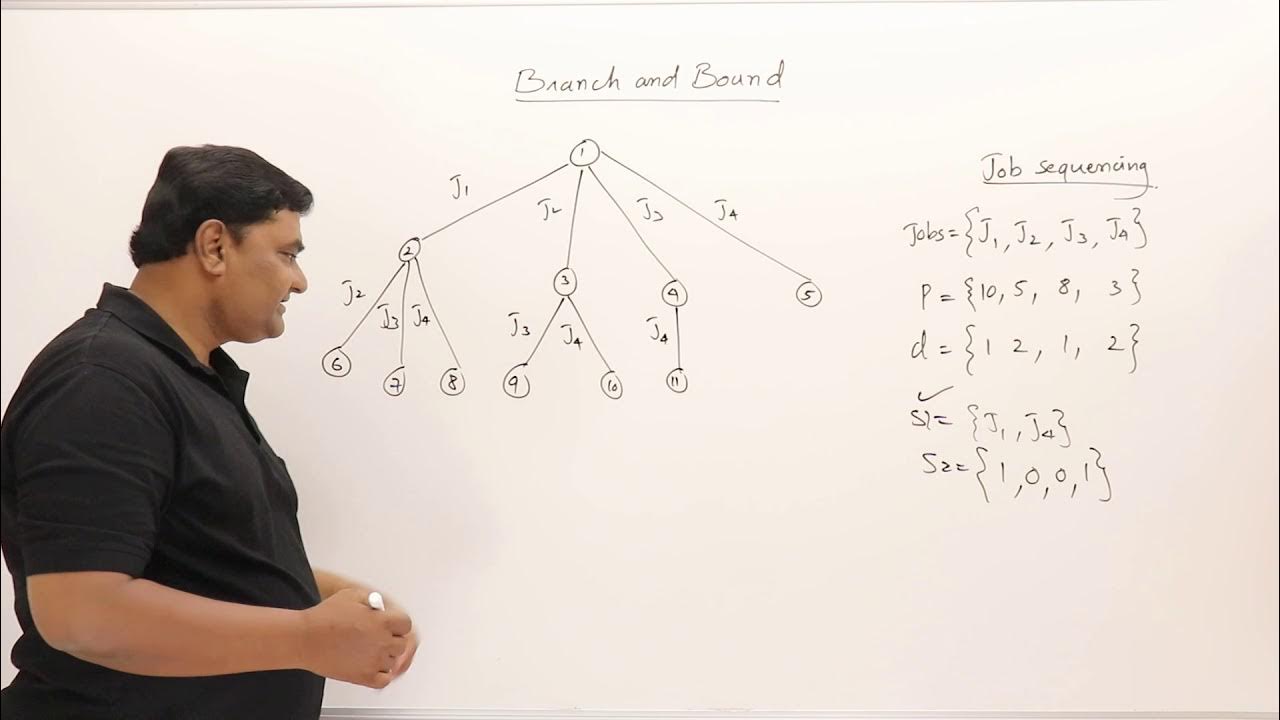AI, Hungarian Algo.Education
Summary
TLDRThis transcript presents an educational session on optimization techniques, including Fuzzy Logic and the Branch and Bound method. The instructor walks through an assignment problem involving flight tickets, luggage, and services, using mathematical algorithms to calculate probabilities, find minimum and maximum values, and optimize resources. The process involves various steps such as subtracting minimum values, calculating averages, and identifying corner values to optimize decisions. The aim is to provide a comprehensive guide on applying optimization methods to real-world problems, culminating in the determination of the most efficient solutions for resource allocation.
Takeaways
- 😀 The task involves using Fuzzy Logic to optimize flight choices based on different parameters such as price, flight duration, luggage weight, and services offered.
- 😀 The key approach is to calculate probabilities (e.g., 0.2, 0.3) for users who prefer specific aspects like the flight's affordability or duration.
- 😀 The method of Cubago is used to calculate averages by adding values and dividing by 4, which helps in determining the best option based on probabilities.
- 😀 The task includes a detailed analysis of the flight options, with flight tickets priced at ₹1 lakh and ₹85,000, each having different service qualities and durations.
- 😀 The process involves calculating the minimum values for each job and subtracting them from the given values to optimize assignments.
- 😀 The importance of selecting the lightest (smallest) value in each column is emphasized to ensure the most efficient solution.
- 😀 After finding the minimum values, the next step involves intersecting them to identify the best possible solutions and cut the redundant options.
- 😀 The algorithm relies on identifying the corner values of intersecting points to optimize the final decision on the best job assignments.
- 😀 The method uses a branch-and-bound approach to optimize the assignment, ensuring that each solution meets the required criteria without redundancy.
- 😀 The final step involves finding the optimal assignments by removing values that do not contribute to the solution, ensuring efficiency in the overall system.
Q & A
What is the main task discussed in the script?
-The main task discussed in the script is related to decision-making in optimization problems, focusing on concepts like probability, logic, and methods such as Branch and Bound for solving complex problems, such as flight scheduling and service optimization.
What is the role of the probability values mentioned in the script?
-The probability values represent the likelihood of different outcomes, such as the probability of passengers affording or preferring specific flights based on factors like price, duration, baggage weight, and services provided. These probabilities help in making decisions about the best flight options.
How are the average values calculated in the process?
-To calculate the average values, the script suggests adding the given values (probabilities or ratings) and dividing by 4. This provides an overall average score that is used to determine the best possible option.
What is the significance of the 'minimum' values in the Branch and Bound method?
-The 'minimum' values in the Branch and Bound method are used to eliminate unworthy options by subtracting the minimum values from the given data, thereby narrowing down the best choices. The smallest values are then used to determine the most optimal solution.
What does 'crossing' or 'intersection' of values mean in the context of this process?
-The 'crossing' or 'intersection' refers to the process where two values from different rows or columns meet at a point in the decision matrix. This helps identify the optimal values and is used in decision-making to ensure that the best choice is selected.
What does the term 'corner values' refer to?
-'Corner values' refer to the points in the decision matrix where rows and columns intersect, particularly when the smallest values from both dimensions meet. These values are crucial for determining optimal solutions.
How does the system determine the 'optimal value' in the decision-making process?
-The optimal value is determined by selecting the smallest values from the intersection points (corner values), comparing them, and ensuring that the overall system works at 100% efficiency. The best values are chosen to minimize the cost or maximize the benefit based on the constraints.
What does it mean when certain values are 'cut' or excluded from the matrix?
-When values are 'cut,' they are excluded from the decision-making process because they do not meet the required conditions or are no longer relevant due to being too high or too low. This helps streamline the analysis and focus on the most optimal choices.
How are zeros used in the process described in the script?
-Zeros in the matrix represent non-optimal or irrelevant values. These zeros are strategically placed to simplify the process, and only the relevant values that are non-zero are used in further calculations to find the best possible solutions.
What is the final outcome of the process described in the script?
-The final outcome is the identification of the best options for the task at hand. The method leads to the selection of the most optimal values for flight selection, service preferences, and baggage handling, ensuring the most efficient and cost-effective solutions are chosen.
Outlines

此内容仅限付费用户访问。 请升级后访问。
立即升级Mindmap

此内容仅限付费用户访问。 请升级后访问。
立即升级Keywords

此内容仅限付费用户访问。 请升级后访问。
立即升级Highlights

此内容仅限付费用户访问。 请升级后访问。
立即升级Transcripts

此内容仅限付费用户访问。 请升级后访问。
立即升级浏览更多相关视频

7 Branch and Bound Introduction

Fuzzy SUGENO alias TAKAGI-SUGENO-KANG | Sistem Inferensi Fuzzy | Studi Kasus Mesin Cuci Otomatis

Fuzzy TSUKAMOTO | Sistem Inferensi Fuzzy | Contoh Studi Kasus dan Langkah Penyelesaiannya

How To Implement Fuzzy Logic Control in MATLAB/SIMULINK ? (Part-3) | Dr. J. A. Laghari

Logika Fuzzy MAMDANI dengan MATLAB | Fuzzy Logic Designer Toolbox

Branch & Bound Algorithm with Example | Easiest Explanation of B&B with example
5.0 / 5 (0 votes)
